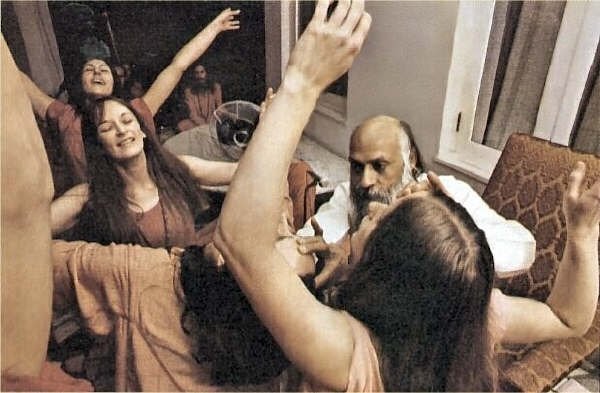BUDDHAM SHARANAM GACHCHHAMI: I surrender to the master.
The master is such a magnetic force that your surrender to the master becomes your protection; hence it is called the shelter. Then you are secure, then you are guarded, then you are protected. Then your hand is in those hands which know where to take you, what direction to give to you.
The second thing is the commune. Each buddha creates a commune, because without a commune a buddha cannot function. A commune means his energy field, a commune means the people who have become joined with him, a commune means an alternate society to the ordinary mundane society which goes after spurious comforts — it is there available to everybody.
A small oasis in the desert of the world is what is meant by a commune created by a buddha — a small oasis in which life is lived with a totally different gestalt, with a totally different vision, with a totally different goal; where life is lived with purpose, meaning, where life is lived with method — even though to the outsiders it may look like madness, but that madness has a method in it — where life is lived prayerfully, alert, aware, awake; where life is not just accidental, where life starts becoming more and more a growth in a certain direction, towards a certain destination; where life is no more like driftwood.
And the third is the dhamma. Dhamma means truth. Buddha represents the dhamma in two ways: one, through his communication, verbal, and second, through his presence, through his silence, through his communion: nonverbal.
The verbal communication is only an introduction for the nonverbal. The nonverbal is an energy communication. The verbal is only preparatory; it simply prepares you so you can allow the master to communicate with you energywise, because energywise it is really moving into the unknown.
Energywise it needs great trust, because you will be completely unaware where you are going — aware that you are going somewhere, aware that you are being led somewhere, aware that something is happening of tremendous import; but what exactly it is you don’t yet have the language for, you don’t have any experience to recognize.
You will be moving into the uncharted.
The buddha represents dhamma, truth, in two ways. Verbally he communicates with the students; nonverbally, through silence, through energy, he communicates with the disciples.
And then there comes the ultimate unity where neither communication nor communion is needed, but oneness has been achieved — where the master and the disciple become one, when the disciple is just a shadow, when there is no separation.
These are the three stages of growth: student, disciple, devotee.
OSHO


